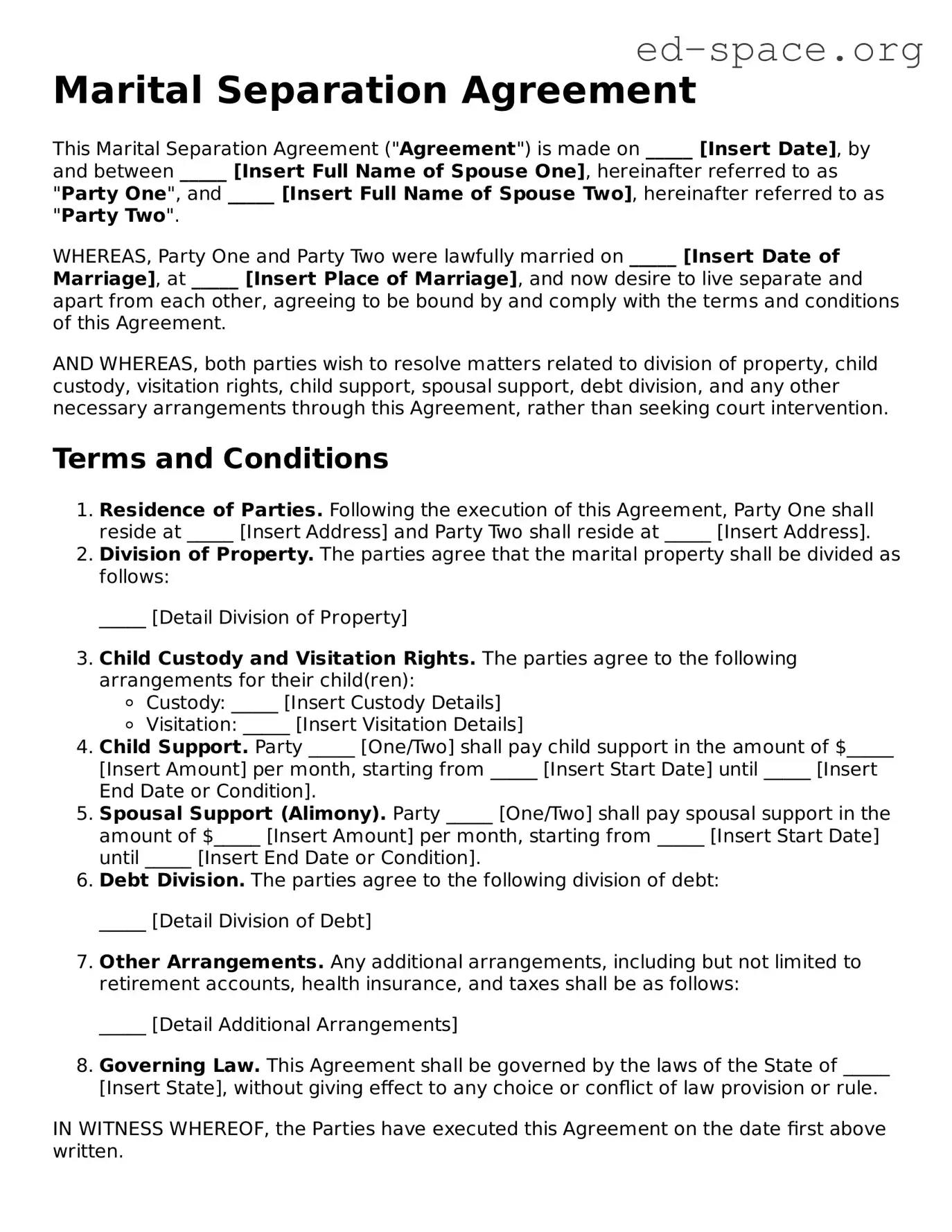What is a Marital Separation Agreement?
A Marital Separation Agreement is a legally binding document that outlines how a couple has decided to divide their assets, liabilities, and responsibilities after deciding to live apart but before they are legally divorced. It may include terms for child support, custody arrangements, division of property, and alimony. This agreement helps both parties understand their rights and expectations during the separation period.
Do we need a lawyer to create a Marital Separation Agreement?
While it is not mandatory to hire a lawyer to create a Marital Separation Agreement, consulting with one can be very beneficial. A lawyer can provide legal advice, ensure the agreement meets all legal standards, and help protect your rights. If the separation is amicable and straightforward, some couples opt to write their own agreement. However, legal advice is recommended to avoid potential pitfalls.
Is a Marital Separation Agreement the same as a divorce?
No, a Marital Separation Agreement is not the same as a divorce. The agreement is a step taken during the separation phase before a divorce is finalized. It outlines how a couple agrees to manage their affairs while living apart but does not dissolve the marriage legally. A divorce, on the other hand, legally ends a marriage.
Can a Marital Separation Agreement be modified?
Yes, a Marital Separation Agreement can be modified, but both parties must agree to any changes. These modifications must be documented in writing and signed by both parties. Depending on your jurisdiction, it may also need to be filed with the court. Modifications are often sought if circumstances change significantly, affecting the terms of the original agreement.
What happens if one party does not follow the Marital Separation Agreement?
If one party does not follow the terms of the Marital Separation Agreement, the other party can take legal action to enforce the agreement. Since the agreement is legally binding, courts can order compliance and even impose penalties or fines for non-compliance. Legal enforcement ensures that both parties adhere to the agreement's terms.
How does the agreement affect child custody and support?
A Marital Separation Agreement can include terms for child custody and support, outlining who will have custody of the children, the visitation schedule, and how much child support will be paid. These terms are created with the children's best interests in mind and can be an amicable solution to co-parenting during a separation. The agreement provides a structured plan for parenting arrangements and financial support for the children.
Is the Marital Separation Agreement legally binding in all states?
While most states recognize Marital Separation Agreements as legally binding, the specifics can vary from one state to another. It is essential to check your state's laws to ensure your agreement complies with local statutes and requirements. Consulting with a legal professional knowledgeable about your state's laws can provide clarity and help in drafting an agreement that will be recognized by the court.
